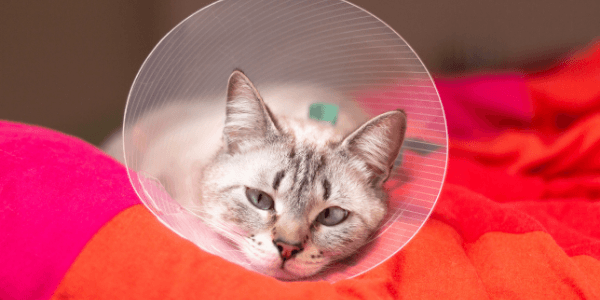 Anesthesia is like any medical procedure – there are benefits and risks, and death can occur under anesthesia.
Anesthesia is like any medical procedure – there are benefits and risks, and death can occur under anesthesia.
Approximately one in 1,000 healthy cats and one in 2,000 healthy dogs die under anesthesia each year.
While any anesthetic-related deaths are unacceptable, these incidence rates are actually quite low. But, of course, there’s still plenty of room for improvement. One of the reasons we still see deaths related to anesthetic procedures is because not all practices are actively taking all of the steps necessary to reduce anesthetic risk.
This article will help you understand the process of anesthesia and empower you to ask the important questions you can and should ask of your pet’s medical team to help minimize your pet’s anesthetic risk.
The Anesthetic Process
Anesthesia occurs in several steps, with opportunities at each step to minimize risks for your pet. Below is a simple outline of the steps involved in anesthesia.
- Assessment. Anesthesia starts with an assessment of your pet’s health. The veterinary medical team will assemble any needed medical history and lab results and perform a physical exam. Here is where they could be assigning an anesthetic risk factor and determining if any specific interventions might be helpful to reduce the anesthetic risk for your pet.
Complications such as low blood pressure, shallow breathing, low body temperature, slow heart rate, and delayed recovery from anesthesia can all be anticipated and planned for during the assessment stage. An anesthesia plan can provide guidance for prevention, recognition, and treatment of anesthetic complications. - Pre-anesthetic medications. “Pre-meds,” as they’re referred to in the hospital, have many benefits. Amongst other functions, they provide preventive pain management, reduce stress, and minimize the necessary dose of other anesthetic drugs. Pre-meds are specifically chosen for your pet, based on his or her unique anesthesia profile.
- IV catheter. This allows for the administration of IV drugs and fluids, as well as the IV induction of anesthesia, which is safer and less stressful than mask induction. An IV catheter is especially important if an emergency drug is needed to treat a complication.
- Pre-oxygenation and IV induction. Pre-oxygenation charges the lungs with oxygen and it, along with the IV induction step, promotes a smooth, controlled transition to unconsciousness.
- Endotracheal intubation. Placing an endotracheal, or “breathing” tube protects the airway and lungs from accidental inhalation of foreign material such as stomach contents, saliva, blood, water, cleaning paste, or tartar. Such a tube is also necessary to maintain anesthesia with inhalant gases.
- Maintenance of anesthesia with patient monitoring and support. At this point, the patient is unconscious and the procedure is underway. Isoflurane or sevoflurane anesthetic gases are the most appropriate agents for the maintenance of anesthesia. Clinical research indicates they both are equally safe and effective.
Monitoring of your pet is crucial to assess vital signs and enable recognition and prevention of complications, or timely treatment of them should they arise. Patient support might include administration of IV fluids and drugs to prevent or treat complications and warming of the patient to prevent loss of body temperature. - Pain management. Local blocks are very effective at reducing pain during dental and other procedures. Other injectable systemic pain-relieving medications may also be administered while your pet is under anesthesia.
- Recovery. Anesthetic maintenance ends, and the endotracheal tube is removed. The patient is usually transferred from the procedure room to a recovery cage, where they are kept comfortable and warm and observed for normal return to consciousness.
- Discharge. Procedural details are discussed, instructions for post-procedural home care are reviewed, pain and/or other medications may be dispensed, and follow-up visits are scheduled.
Questions to Ask Your Veterinarian About Anesthesia
Here are some questions you can ask your veterinary team to learn about the protocols and safeguards they have in place to minimize anesthetic risk and maximize comfort for your pet during all the steps mentioned above. Some of the insights and reassurances you should be looking for are also included.
Print out and bring these questions with you: Download PDF or Download Word Document
Q: Are there specific conditions or other aspects of my pet’s health that increase their risk for anesthetic complications? And, if so, what precautions are you taking to minimize those risks and to deal with those complications should they occur?
- The veterinarian performing or overseeing the procedure should demonstrate that they have a good understanding of and have taken into account your pet’s medical history and current condition. This is a crucial part of the “Assessment” step described above.
- Your pet’s veterinary team should be aware of the complications your pet is most at risk of, and they should be able to describe specific steps they will take to recognize, prevent, and treat these potential anesthetic complications.
- You want to know that pre-anesthetic medications will be chosen specifically for your pet, anesthesia will be induced with an IV medication and not a mask, an endotracheal tube will be placed to protect the airway, maintenance will occur with anesthetic gas, IV fluids, and drugs are available to prevent and treat complications, and monitoring will occur on a regular basis throughout the procedure and (very importantly) during recovery.
- As an advocate for your pet, you want to ensure that anesthesia is being monitored by a knowledgeable person with training specific for anesthesia in veterinary patients. Ideally, a Certified Veterinary Technician (CVT) or Registered Veterinary Technician (RVT or Nurse) will monitor your pet.
- Ideally, you want one knowledgeable person who is dedicated to closely monitoring anesthesia for your pet and is not distracted by other tasks.
- Anesthetic depth is monitored by looking at jaw tone, eye position, response to surgery
- Heart rate, respiratory rate, and temperature
- Doppler or oscillometric blood pressure monitor
- Capnograph and pulse oximeter
- At a minimum, you want your pet’s heart rate, respiratory rate, blood pressure, temperature, and oxygen saturation to be monitored regularly throughout the dental procedure.
- The majority of anesthetic deaths occur during recovery from anesthesia. So you want to know that your pet will be observed and cared for during this critical time period (the first 1–3 hours after awakening from anesthesia).
Monitoring of pulse and breathing, as well as temperature are important. Temperature support and continued IV fluids may be helpful for some pets.
- While this may not seem directly related to anesthesia, early detection of damaged and infected teeth allows timely intervention and treatment, which will help minimize the need for future anesthesia and discomfort for your pet. Dental radiographs dramatically improve your veterinarian’s ability to detect and treat dental disease. Such evaluation is important to ensure your pet’s overall dental health.
-
Your veterinarian may recommend changes in your pet’s medications and feeding schedule before and after the procedure. They may recommend options for getting your pet used to traveling in the car. Appropriate pain and other medications may be prescribed.
Following dental cleanings, home dental care, such as brushing their teeth and special dental diets or treats, may be recommended to help maintain your pet’s dental health (and may reduce or eliminate the need for major cleaning and dental work in the future).
Following other anesthetic procedures, your veterinarian may be recommending limiting exercise or other activities for your pet.
As you can see, while anesthesia of pets is relatively safe and far safer than it used to be, there are still steps you and your pet’s medical team can take to minimize the risk of anesthetic complications. Safe anesthesia involves multiple steps and requires knowledgeable drug choices and close monitoring and support of the pet before, during, and after anesthesia.
Knowing how to prepare, what to expect, and what questions to ask your veterinary team will help keep the process as painless as possible – for you and your pet.



